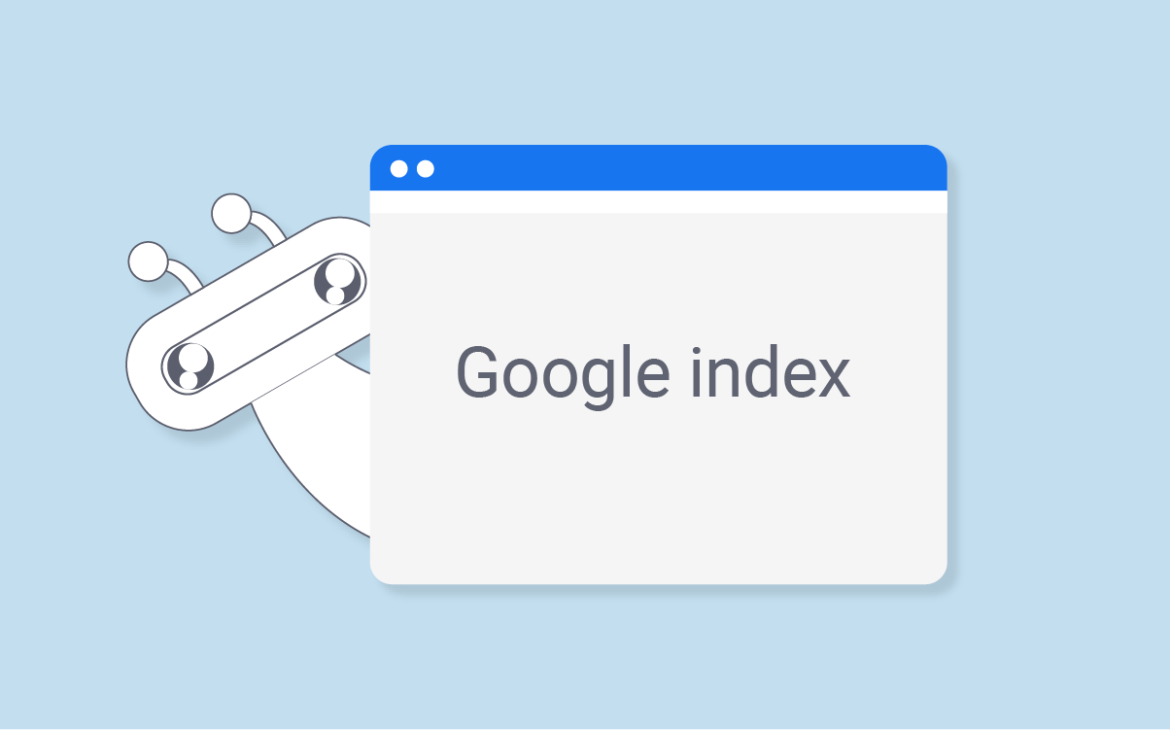How To Fix Indexing Problems On Your Business Website
In today’s digital landscape, online presence is very important for any online business. A significant aspect of that online presence is ensuring that your business website is properly indexed by search engines. Indexing refers to the process by which search engines like Google or Bing crawl and organize the content on your website, making it discoverable and accessible to users through search results. However, indexing problems can hinder your website’s visibility, leading to reduced organic traffic, lower search engine rankings, and missed opportunities for potential customers. This article aims to provide you with insights into diagnosing and fixing common indexing issues, as well as optimizing your website’s content to enhance indexing efficiency. By following the strategies and best practices outlined here, you can ensure that your business website receives the visibility and attention it deserves in the digital realm.

1. Introduction: Understanding the Importance of Proper Indexing
What is Indexing and Why is it Important?
Imagine you’re trying to find a specific book in a massive library, but there’s no index or catalog to guide you. Frustrating, right? Well, the same concept applies to search engines and websites. Indexing is the process search engines use to catalog and organize web pages, allowing them to quickly retrieve relevant results for users’ search queries. Proper indexing ensures that your website is visible to search engines and can be found by potential customers.
The Impact of Indexing Problems on Business Websites
When your business website encounters indexing problems, it’s like your website suddenly disappears from search engine results. This can have a significant impact on your online visibility, organic traffic, and ultimately, your bottom line. Without proper indexing, search engines may have trouble understanding the content and structure of your website, leading to decreased visibility and missed opportunities to attract potential customers.
2. Common Indexing Issues: Identification and Causes
Crawling Errors
Crawling errors occur when search engine bots encounter difficulties accessing and navigating your website. These errors can be caused by factors like server misconfigurations, blocked or disallowed pages, or slow-loading pages. When search engine bots can’t properly crawl your website, it hinders the indexing process and affects your website’s visibility in search results.
Duplicate Content
Duplicate content refers to having identical or very similar content on multiple pages of your website or across different websites. Search engines strive to deliver unique and valuable content to users, so when they encounter duplicate content, they may struggle to determine which version to index and prioritize. This can lead to lower rankings and diminished visibility for your website.
Broken Links and Redirects
Broken links and redirects can pose problems for search engine indexing. Broken links lead to dead ends, frustrating both search engines and users. On the other hand, excessive or incorrect use of redirects can confuse search engines about the relevance and consistency of your content. These issues can disrupt the indexing process and negatively impact your website’s ranking and visibility.
XML Sitemap Issues
XML sitemaps are files designed to help search engines understand the structure and organization of your website. If your XML sitemap is missing, incomplete, or contains errors, search engines may have trouble indexing and accurately interpreting your website’s content. This can result in a reduced visibility and missed opportunities to rank for relevant keywords.

3. Assessing the Impact of Indexing Problems on Your Business Website
Decreased Organic Traffic and Visibility
When your website is not properly indexed, it’s like hiding a beautifully crafted sign in a dark alley. Your potential customers won’t be able to find you, resulting in decreased organic traffic and visibility. Without a visible online presence, you risk losing out on valuable opportunities to engage with your target audience and drive meaningful traffic to your website.
Negative Effects on Search Engine Rankings
Search engine rankings are crucial for attracting organic traffic, and indexing problems can significantly impact your website’s rankings. If search engines struggle to understand and index your content, your website may not appear in relevant search results. Lower rankings mean fewer organic clicks, and ultimately, less business for you.
Implications for User Experience and Conversions
Indexing problems not only affect search engine visibility but also impact user experience. When users click on search results that lead to broken or irrelevant pages, they may become frustrated and leave your website. This negative experience can diminish trust in your brand and lower conversion rates, leading to missed opportunities for business growth.
4. Diagnostic Steps: How to Identify Indexing Problems
Google Search Console and Webmaster Tools
One of the first steps in identifying indexing problems is to utilize tools like Google Search Console and Webmaster Tools. These platforms provide valuable insights into how search engines perceive and index your website. They can help identify crawling errors, duplicate content issues, XML sitemap problems, and more.
Analyzing Server Logs
Analyzing server logs can provide deeper insights into how search engine bots interact with your website. By examining the log files, you can identify any patterns of crawling errors or issues that prevent search engines from properly indexing your pages. This data can help pinpoint specific problem areas that need attention.
Conducting Site Audits
Performing regular site audits allows you to take a comprehensive look at your website’s structure, content, and technical aspects. These audits can help you identify and fix indexing problems by uncovering duplicate content, broken links, redirect errors, and other issues that may hinder the indexing process. Site audit tools and services are available to assist you in this process.
With a solid understanding of the importance of indexing, the identification of common indexing issues, the impact on your business website, and effective diagnostic steps, you’ll be well-equipped to fix indexing problems and boost your website’s visibility and performance. So, let’s get indexing!and Maintenance: Ensuring Continued Indexing Success
5. Addressing Technical Issues: Fixing Indexing Problems
Resolving Crawling Errors
Crawling errors can be a nightmare for your website’s indexing. These errors occur when search engine bots have trouble accessing certain pages on your site. To fix this, ensure that your website’s robots.txt file is correctly configured and check for any server or DNS issues that may be obstructing crawling. Remember, if search engines can’t crawl your pages, they can’t index them.
Dealing with Duplicate Content
Having duplicate content on your website can confuse search engines and dilute the visibility of your pages in search results. It’s crucial to identify and resolve any instances of duplicate content. Use tools like Copyscape or Siteliner to find duplicate content and make necessary changes such as rewriting or consolidating similar pages. By providing unique and valuable content, you increase the chances of your pages being properly indexed.
Fixing Broken Links and Redirects
Broken links and redirects can disrupt the indexing process and negatively impact user experience. Utilize tools like Broken Link Checker or Screaming Frog to identify broken links. Additionally, ensure that any redirects are set up correctly, especially when migrating or restructuring your website. By keeping your links functional and organized, search engines can effectively index your content.
Optimizing XML Sitemaps
XML sitemaps serve as a roadmap for search engine bots, guiding them through the pages of your website. Ensure that your XML sitemap is up to date, includes all relevant pages, and adheres to search engine guidelines. Regularly submit your sitemap to search consoles like Google Search Console or Bing Webmaster Tools to aid indexing. By optimizing your XML sitemap, you provide search engines with a clear path to crawl and index your website.

6. Optimizing Content for Indexing: Strategies and Best Practices
Creating SEO-Friendly URLs
Crafting SEO-friendly URLs is essential for both users and search engines. Avoid using numbers or random strings of characters in your URLs, as they provide little context and can confuse search engines. By creating clear and user-friendly URLs, you enhance the chances of your content being indexed correctly.
Writing Unique and Engaging Meta Tags
Meta tags, specifically the title and description tags, play a crucial role in attracting both search engine crawlers and users. Craft unique and compelling meta tags for each page, incorporating relevant keywords and accurately summarizing the content. Avoid duplicating meta tags across different pages, as it can hinder indexing and impact search rankings. By writing captivating meta tags, you increase the likelihood of your pages being indexed and clicked on by users.
Incorporating Relevant Keywords
To ensure proper indexing, incorporate relevant keywords naturally throughout your content. Conduct keyword research using tools like Google Keyword Planner or SEMrush to identify commonly searched terms in your industry. By strategically incorporating keywords, you improve your content’s visibility and indexing potential.
Structuring Content with Header Tags
By organizing your content with header tags, you make it easier for search engines to understand and index. Ensure that your header tags follow a logical order and accurately represent the content they precede. By employing proper header tag hierarchy, you enhance the readability and index ability of your content.
7. Leveraging Tools and Resources to Enhance Indexing Efficiency
Utilizing SEO Plugins and Extensions
Take advantage of SEO plugins and extensions offered by content management systems like WordPress. These plugins can assist in optimizing your website for indexing by providing features such as XML sitemap generation, meta tag customization, and SEO analysis. Popular options include Yoast SEO and All in One SEO Pack. By utilizing these tools, you streamline the optimization process and improve your website’s indexing efficiency.
Implementing Schema Markup
Schema markup is a form of structured data that helps search engines understand the content and context of your web pages. By implementing schema markup, you can enhance your website’s visibility in search engine results through rich snippets, knowledge graphs, and other enhanced search features. Utilize tools like Schema.org or Google’s Structured Data Markup Helper to generate and implement schema markup. By incorporating schema markup, you provide search engines with valuable information to better index your content.
Exploring Accelerated Mobile Pages (AMP)
With the increasing importance of mobile optimization, consider implementing Accelerated Mobile Pages (AMP) on your website. AMP is a framework that allows for faster loading times and improved mobile user experience. By adopting AMP, you not only optimize your website for mobile indexing but also potentially gain visibility in Google’s AMP-specific search results and carousel. Explore resources like amp.dev to learn more about implementing AMP and improving your website’s mobile indexing.
8. Monitoring and Maintenance: Ensuring Continued Indexing Success
Regularly Checking Indexing Status
Keep a close eye on your website’s indexing status by regularly monitoring search engine index reports and webmaster tools. Identify any sudden drops or anomalies in indexed pages, as it may indicate indexing issues. Address any problems promptly to prevent potential loss of visibility and traffic.
Monitoring Website Performance
A well-performing website contributes to successful indexing. Monitor your website’s performance metrics, such as page load speed and responsiveness, to ensure a smooth user experience. Optimize images, minify code, and utilize caching mechanisms to improve performance. By maintaining a high-performing website, you facilitate efficient indexing and user satisfaction.
Updating and Refreshing Content
Regularly update and refresh your website’s content to keep it relevant and engaging. Search engines favor fresh, up-to-date content, which can positively impact indexing and search rankings. Remove outdated information, add new insights, and refresh existing pages to ensure search engines recognize your website as a valuable source of information.
Staying Up-to-Date with SEO Trends
Search engine optimization is an ever-evolving field.
In conclusion, fixing indexing problems on your business website is essential for maximizing your online visibility and attracting potential customers. By addressing common indexing issues, conducting regular diagnostics, and implementing effective strategies, you can ensure that your website is properly indexed and optimized for search engine visibility. Remember to continuously monitor and maintain your website’s indexing status to stay ahead of any potential problems. With a well-indexed website, you can enhance your online presence, improve search engine rankings, and ultimately drive more traffic and success to your business.

Conclusion
Sometimes, the toys get all mixed up and it becomes hard to find the one you want. That’s what happens with a business website too.
A business website is like a big collection of information, like toys in a box. When people search for something on the internet, they use a special tool called a search engine. The search engine looks at all the websites and tries to find the most relevant ones to show to the person searching.
But sometimes, the search engine gets confused and can’t find all the information on a website. It’s like the toys in the box are not organized properly, so the search engine can’t find the right toy easily.
To fix this problem, we need to make sure the search engine can understand our website better. We do this by something called indexing. Indexing is like making a list of all the toys in the box, so it becomes easier to find them.
To fix indexing problems on a business website, we need to do a few things. First, we need to make sure all the important information on the website is organized properly. It’s like putting all the similar toys together in the box.
Next, we need to tell the search engine about our website and its important pages. We do this by submitting a special list called a sitemap to the search engine. It’s like giving the search engine a map to find all the toys in the box.
We also need to check if there are any broken links on the website. We need to fix them, so the search engine can easily move around our website, just like we need good roads to go to different places.
Lastly, we need to make sure our website is easy to read and understand. This means using clear words and organizing the information in a way that makes sense. It’s like making sure the labels on the toy boxes are easy to read, so we know what’s inside.
By doing all these things, we can help the search engine find our website easily and show it to people who are looking for what we offer. It’s like making sure the right toy is found quickly in the big box, so everyone can enjoy playing with it!
FAQ
1. Why is indexing important for my business website?
Indexing is crucial because it allows search engines to discover, understand, and rank your website’s content. Proper indexing helps improve your website’s visibility in search results, driving organic traffic, and potential customers to your business.
2. How do I know if my website has indexing problems?
You can identify indexing problems by monitoring changes in organic traffic, analyzing data from Google Search Console, conducting site audits, and checking for crawling errors or duplicate content. These diagnostic steps will help you pinpoint issues that may affect your website’s indexing efficiency.
3. What are some common indexing issues I should be aware of?
Common indexing issues include crawling errors, duplicate content, broken links, and XML sitemap problems. These issues can hinder search engines from properly indexing and ranking your website, resulting in decreased visibility and potential loss of organic traffic.
4. How can I fix indexing problems on my business website?
Fixing indexing problems involves addressing technical issues such as resolving crawling errors, fixing broken links, and optimizing XML sitemaps. It also requires optimizing your website’s content by creating SEO-friendly URLs, using relevant keywords, and incorporating header tags. Utilizing tools like SEO plugins, schema markup, and AMP can further enhance your website’s indexing efficiency.
If you want to build your website in an affordable price contact: www.nextr.in
Read this: 8 Most Effective Ways To Boost Social Media Reach Organically


















